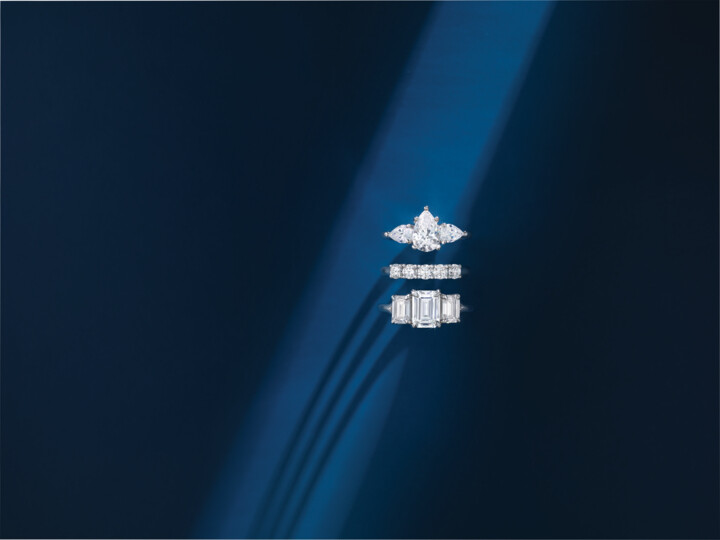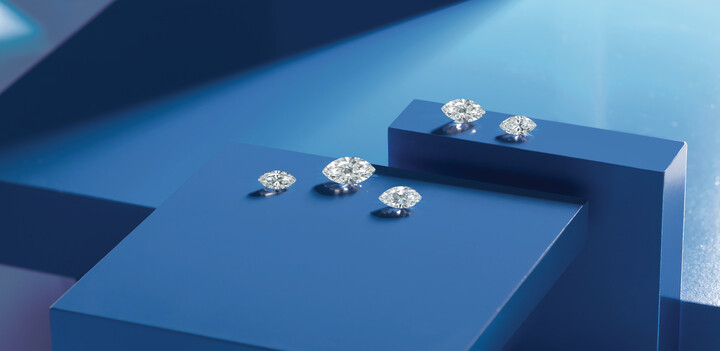
Lab Grown vs Natural Diamond: What's the Real Difference?
The diamond market is undergoing a transformation, and as someone deeply involved in the industry, I see firsthand how lab-grown diamonds are shaking up what we once considered tradition. There’s a lot of talk and even more curiosity about how these stones stack up against their natural counterparts.
Lab-grown diamonds have entered the scene with a bang. They look, feel, and perform just like natural diamonds because, at their core, they’re made of the same stuff: pure carbon. But as you consider your next purchase, whether it’s an engagement ring or a collector’s piece, you might be asking yourself: What really sets these two apart?
Here’s what you need to think about:
- Investment value—How will your diamond hold up over time?
- Environmental impact—What kind of footprint are you leaving?
- Ethical considerations—Where does your diamond come from?
- Budget constraints—How much do you want to spend without compromising quality?
- Personal values and style—Does tradition matter to you or are you open to innovation?
In my experience, choosing between lab-grown and natural diamonds is about more than just what meets the eye. It’s about aligning your purchase with your lifestyle, beliefs, and expectations for the future. Let’s break down the crucial differences so you can make a choice that truly reflects who you are and what matters most to you.
Understanding Diamonds: Composition and Properties

At their core, both natural and lab-grown diamonds are pure crystalline carbon atoms arranged in a specific three-dimensional pattern called a diamond cubic. This identical chemical structure creates the same stunning properties that make diamonds so desirable.
Physical Properties of Diamonds
The physical properties of these gems are remarkable:
- Hardness: Rating 10 on the Mohs scale
- Thermal conductivity: Highest of any natural material
- Refractive index: 2.417-2.419
- Specific gravity: 3.52
These characteristics remain constant regardless of the diamond's origin. When light interacts with the crystal structure, it creates the signature brilliance, fire, and scintillation that diamonds are famous for.
Optical Properties of Diamonds
The optical properties include:
- Exceptional light dispersion (creating the "fire" effect)
- Strong light return (brilliance)
- Dynamic light patterns (scintillation)
Under standard magnification or to the naked eye, you'll find both types of diamonds display identical visual characteristics. The way they scatter light, their transparency, and their ability to be cut and polished into faceted gems remain consistent between natural and lab-grown varieties.
Molecular Perfection of Diamonds
The atomic structure of these stones is so precise that even sophisticated scientific instruments must be specifically calibrated to detect any differences in their formation patterns. This molecular perfection explains why both varieties exhibit the same physical beauty and durability that have made diamonds the world's most sought-after gemstones.
Formation Processes: The Core Difference
Natural diamonds are formed deep within the Earth over billions of years through a complex process. They are created about 150 kilometers (93 miles) below the surface, where temperatures reach extremely high levels of 2,200°F (1,200°C) and pressures are incredibly intense at 725,000 pounds per square inch.
How Natural Diamonds Are Formed
Natural diamonds are formed in the Earth's mantle, which is the layer of rock between the crust and the core. Under these extreme conditions, pure carbon atoms come together and crystallize to form diamonds. These diamonds eventually make their way to the surface through volcanic eruptions.
During these eruptions, a type of rock called kimberlite is brought up from deep underground. Kimberlite pipes are vertical structures filled with igneous rock that act as natural highways for diamonds, allowing them to travel from their place of origin to the Earth's surface.
How Lab-Grown Diamonds Are Created
Lab-grown diamonds, on the other hand, are created using two different methods:
1. High Pressure High Temperature (HPHT)
This method aims to replicate the natural conditions under which diamonds are formed. It involves:
- Using hydraulic presses to generate extremely high pressures of up to 1.5 million pounds per square inch
- Reaching temperatures of around 2,800°F (1,540°C)
- Creating diamonds from a pure carbon source in a relatively short period of time - typically between 2 to 4 weeks
2. Chemical Vapor Deposition (CVD)
The CVD method involves creating diamonds using a gas-based process. Here's how it works:
- A chamber is heated and filled with a carbon-rich gas
- The temperature inside the chamber is maintained at approximately 1,500°F (800°C)
- Carbon atoms from the gas attach themselves to a diamond seed crystal, gradually building up layers of diamond
The CVD process usually takes around 3 to 4 weeks to complete.
The Key Difference: Time and Conditions
While natural and lab-grown diamonds are virtually identical in chemical composition and physical properties, the stories behind their creation couldn’t be more different. Natural diamonds are forged deep beneath the earth over billions of years, shaped by heat and pressure that only nature can provide. In contrast, lab-grown diamonds are crafted above ground in state-of-the-art laboratories, replicating these intense conditions to produce a diamond within just weeks.
These contrasting origins leave subtle clues, trace elements, growth patterns, and inclusions, that skilled gemologists can detect using advanced tools. But to the naked eye, even for seasoned jewelry lovers, telling them apart is nearly impossible. The brilliance, fire, and overall appearance? Practically indistinguishable.
Visual and Structural Characteristics
Natural diamonds tell a unique story through their internal features. These gems contain distinctive trace elements like nitrogen and boron, picked up during their billion-year journey beneath Earth's surface. You'll find microscopic inclusions - tiny crystals, minerals, or even fluids trapped within the stone during its formation.
Lab-grown diamonds display their own set of identifying characteristics:
- Growth Pattern Signatures: Lab diamonds exhibit specific crystal patterns that reflect their rapid formation process
- Metallic Inclusions: HPHT diamonds often contain minute metallic particles from the growth chamber
- Strain Patterns: Different fluorescence responses under specialized lighting
These structural differences serve as fingerprints for gemologists using advanced equipment. The average consumer won't spot these distinctions - both types appear identical to the naked eye and exhibit the same fire, brilliance, and sparkle. Even experienced jewelers need specialized tools like spectroscopes and fluorescence imaging to differentiate between natural and lab-grown stones.
The presence of specific growth patterns and inclusions helps gemological laboratories maintain accurate diamond certification and identification processes.
Identification, Certification, and Market Trends
The Gemological Institute of America (GIA) has different grading systems for natural and lab-grown diamonds. Natural diamonds get traditional GIA certificates with detailed color and clarity grades, while lab-grown diamonds receive specialized reports marked with "Laboratory-Grown" and use simplified color grades.
How Gemologists Identify Diamond Origins
Professional gemologists use advanced equipment to identify where diamonds come from:
- Spectroscopy devices analyze the chemical composition of the diamond
- DiamondView™ machines reveal growth patterns through fluorescence
- Advanced microscopes detect subtle structural variations in the diamond
Changes in Certification Practices for Lab-Grown Diamonds
The lab-grown diamond market has seen significant changes in certification practices. Major labs now offer:
- Specialized identification marks
- Digital tracking systems
- Growth process documentation
- Origin verification
These changes aim to provide more transparency and assurance regarding the authenticity and origin of lab-grown diamonds.
Security Features in GIA Reports
GIA reports include security features like holographic elements and QR codes to prevent forgery. These certificates serve as essential documentation for insurance, resale, and authentication purposes.
Adapting Certification Processes for Lab-Grown Diamonds
The growing lab-grown diamond market has prompted certification bodies to adapt their processes. This includes creating standardized terminology and grading criteria specific to synthetic stones. By doing so, they aim to ensure consistency and accuracy in the evaluation of lab-grown diamonds.
Environmental, Ethical Considerations, Pricing, and Consumer Perspectives

Environmental Impact: Natural vs. Lab-Grown Diamonds
The environmental impact of diamond production varies significantly between natural and lab-grown stones.
Traditional Diamond Mining
Traditional diamond mining requires extensive land disruption, heavy machinery, and substantial water usage. A single carat of mined diamond can displace up to 1,750 tons of earth and consume up to 127 gallons of water.
Lab-Grown Diamonds
Lab-grown diamonds present a smaller environmental footprint:
- Reduced land disruption
- Lower water consumption
- Controlled waste management
- Smaller carbon footprint per carat
Ethical Sourcing: Conflict-Free Assurance with Lab-Grown Diamonds
Lab-grown diamonds bypass the historical concerns of conflict diamonds. The controlled laboratory environment ensures complete traceability from creation to market, eliminating risks associated with unethical mining practices or worker exploitation.
Market Acceptance: Consumer Trends Favoring Lab-Grown Diamonds
Recent surveys indicate growing acceptance of lab-grown diamonds, particularly among younger consumers:
- 70% of millennials consider lab-grown diamonds for engagement rings
- Social media influence drives awareness and desirability
- Celebrity endorsements boost market credibility
- Increasing retail presence in major jewelry chains
Price Comparison: Understanding the Cost Difference
Lab-grown diamonds typically cost 40-50% less than natural diamonds of equivalent quality. This price difference stems from:
Factors Affecting Natural Diamond Prices
- Rarity and limited supply
- Complex mining operations
- Extended formation time
- Market control by major diamond companies
Factors Affecting Lab-Grown Diamond Prices
- Controlled production environment
- Shorter creation timeline
- Growing competition among producers
- Advancing technology reducing costs
Technological Advancements: Shaping the Future of Diamond Value
The rapid advancement in lab-grown diamond technology continues to influence market dynamics. Production capabilities now extend to larger stones and fancy colors, previously exclusive to natural diamonds. This technological progress, combined with increasing consumer awareness, shapes new perspectives on diamond value and authenticity.
Conclusion
Lab-grown and natural diamonds have the same chemical makeup and physical characteristics, but their different formation processes make them unique. Your choice between these two options depends on your personal values and priorities:
- Budget-conscious buyers might prefer lab-grown diamonds, which offer significant savings without compromising quality.
- Traditional collectors often value natural diamonds for their geological history and potential investment value.
- Environmentally conscious consumers may be attracted to lab-grown diamonds' smaller environmental impact.
- Ethics-focused individuals might appreciate the transparent supply chain of lab-grown stones.
The decision between lab-grown and natural diamonds isn't about which is "better" - it's about what aligns with your values, budget, and personal story. Both options offer certified quality and beauty, allowing you to choose the path that best fits your priorities.
To delve deeper into this fascinating world of diamonds, I invite you to schedule a one-on-one consultation with me, Mike Nekta, at the New York City Diamond District. Let's explore together how we can find the perfect diamond that complements your unique style and values. Book your viewing today!
